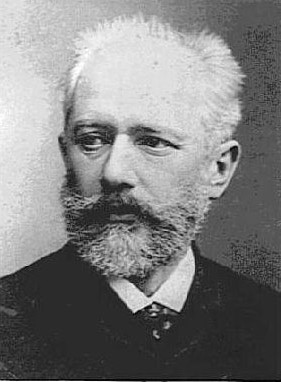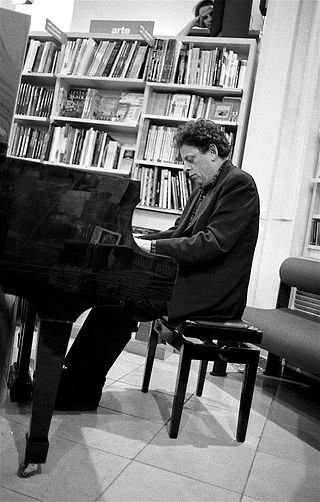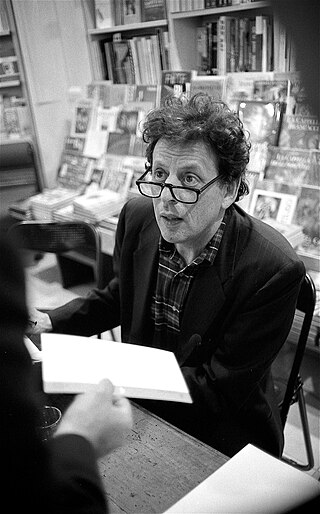
Philip Glass is an American composer and pianist. He is widely regarded as one of the most influential composers of the late 20th century. Glass's work has been associated with minimalism, being built up from repetitive phrases and shifting layers. Glass describes himself as a composer of "music with repetitive structures", which he has helped to evolve stylistically.

In music, a cadenza, is, generically, an improvised or written-out ornamental passage played or sung by a soloist(s), usually in a "free" rhythmic style, and often allowing virtuosic display. During this time the accompaniment will rest, or sustain a note or chord. Thus an improvised cadenza is indicated in written notation by a fermata in all parts. A cadenza will usually occur over either the final or penultimate note in a piece, the lead-in, or the final or penultimate note in an important subsection of a piece. A cadenza can also be found before a final coda or ritornello.

The Violin Concerto in D major, Op. 61, was written by Ludwig van Beethoven in 1806. Its first performance by Franz Clement was unsuccessful and for some decades the work languished in obscurity, until revived in 1844 by the then 12-year-old violinist Joseph Joachim with the orchestra of the London Philharmonic Society conducted by Felix Mendelssohn. Joachim would later claim it to be the "greatest" German violin concerto. Since then it has become one of the best-known and regularly performed violin concertos.

Julian Lloyd Webber is a British solo cellist, conductor and broadcaster, a former principal of Royal Birmingham Conservatoire and the founder of the In Harmony music education programme.
Simon Proctor is a British composer and pianist, known for his works for unusual instruments.
The Cello Concerto in A minor, Op. 129, by Robert Schumann was completed in a period of only two weeks, between 10 October and 24 October 1850, shortly after Schumann became the music director at Düsseldorf.

Edward Elgar's Cello Concerto in E minor, Op. 85, his last major completed work, is a cornerstone of the solo cello repertoire. Elgar composed it in the aftermath of the First World War, when his music had already become out of fashion with the concert-going public. In contrast with Elgar's earlier Violin Concerto, which is lyrical and passionate, the Cello Concerto is for the most part contemplative and elegiac.
The Cello Concerto in B minor, Op. 104, B. 191, is the last solo concerto by Antonín Dvořák. It was written in 1894 for his friend, the cellist Hanuš Wihan, but was premiered in London on March 19, 1896, by the English cellist Leo Stern.

The China Philharmonic Orchestra is an orchestra founded in Beijing, China, on May 25, 2000, based on the previous China Broadcasting Symphony Orchestra. It is a division of the State Administration of Radio, Film, and Television (SARFT) of the People's Republic of China.

The Symphony No. 2 in E minor, Op. 27, is a four-movement composition for orchestra written from October 1906 to April 1907 by the Russian composer Sergei Rachmaninoff. The premiere was performed at the Mariinsky Theatre in Saint Petersburg on 26 January 1908, with the composer conducting. Its duration is approximately 60 minutes when performed uncut; cut performances can be as short as 35 minutes. The score is dedicated to Sergei Taneyev, a Russian composer, teacher, theorist, author, and pupil of Pyotr Ilyich Tchaikovsky. The piece remains one of the composer's most popular and best known compositions.
Camille Saint-Saëns composed his Cello Concerto No. 1 in A minor, Op. 33, in 1872, when he was 37 years old. He wrote this work for the French cellist, viola da gamba player and instrument maker Auguste Tolbecque. Tolbecque was part of a distinguished family of musicians closely associated with the Société des Concerts du Conservatoire, France's leading concert society. The concerto was first performed on January 19, 1873, at the Paris Conservatoire concert with Tolbecque as soloist. This was considered a mark of Saint-Saëns' growing acceptance by the French musical establishment.
Edward Gregson is an English composer of instrumental and choral music, particularly for brass and wind bands and ensembles, as well as music for the theatre, film, and television. He was also principal of the Royal Northern College of Music.

The Cello Concerto of Pyotr Ilyich Tchaikovsky is a conjectural work based in part on a 60-bar fragment found on the back of the rough draft for the last movement of the composer's Sixth Symphony, the Pathétique. In 2006, Ukrainian composer and cellist Yuriy Leonovich completed the work.
Neil William Thomson is a British conductor and conducting professor.

The Barjansky Stradivarius of c.1690 is an antique cello fabricated by the Italian Cremonese luthier Antonio Stradivari (1644–1737).

The Concerto Project is a collection of concerti written by Philip Glass. The series was begun in 2000 and contains eight works, the most famous of which is probably the Concerto for Cello and Orchestra. Some of the concerti in the volumes were written before the commencement of the project and were categorized into the series.
The Concerto Fantasy for Two Timpanists and Orchestra is a double timpani concerto written by Philip Glass in 2000. It is paired with the Cello Concerto on Vol. I of Glass' Concerto Project, a set of eight concerti by the composer. A typical performance of the work lasts 25–28 minutes. It was written for Jonathan Haas and later recorded by Evelyn Glennie, and was premiered by Haas and Svet Stoyanov with the American Symphony Orchestra in Avery Fisher Hall, Lincoln Center, conducted by Leon Botstein. The work was commissioned jointly by the American Symphony Orchestra, the Peabody Symphony, the Milwaukee Symphony, the St. Louis Symphony and the Phoenix Symphony. In 2004, a transcription for wind ensemble was written by Mark Lortz, which debuted at Peabody Institute in 2005.

The Piano Concerto No. 2 was written by American composer Philip Glass in 2004. It is also called the Piano Concerto No. 2: After Lewis and Clark, due to its musical representation of the American pioneers. It was composed for the Nebraska Lewis and Clark Bicentennial Commission, the Lied Center for Performing Arts, and the University of Nebraska-Lincoln Hixson–Lied College of Fine and Performing Arts. It is included as one of the concerti in Glass' Concerto Project, a four-volume collection of commissioned works. The work itself deals with the journey of Meriwether Lewis and William Clark, interpreting the stages of their expedition progressively in each movement.

The Concerto for Harpsichord and Orchestra was completed by Philip Glass in spring of 2002. It was commissioned for the Northwest Chamber Orchestra by Charles and Diana Carey and published by Dunvagen Music. Glass wrote the concerto with the Baroque tradition in mind; however, in order to approach the work in a modern idiom, he calls for a contemporary chamber orchestra to accompany the harpsichord. The concerto was premiered in September 2002 in Seattle, with David Schrader as soloist performing with the Northwest Chamber Orchestra. It is approximately 20 minutes in length. The concerto was included in Glass' Concerto Project, a collection in four volumes.
The Concerto Grosso No. 1 was the first of six concerti grossi by Soviet composer Alfred Schnittke. It was written in 1976–1977 at the request of Gidon Kremer and Tatiana Grindenko who were also the violin soloists at its premiere on 21 March 1977 in Leningrad together with Yuri Smirnov on keyboard instruments and the Leningrad Chamber Orchestra under Eri Klas. It is one of the best-known of Schnittke's polystylistic compositions and marked his break-through in the West.












